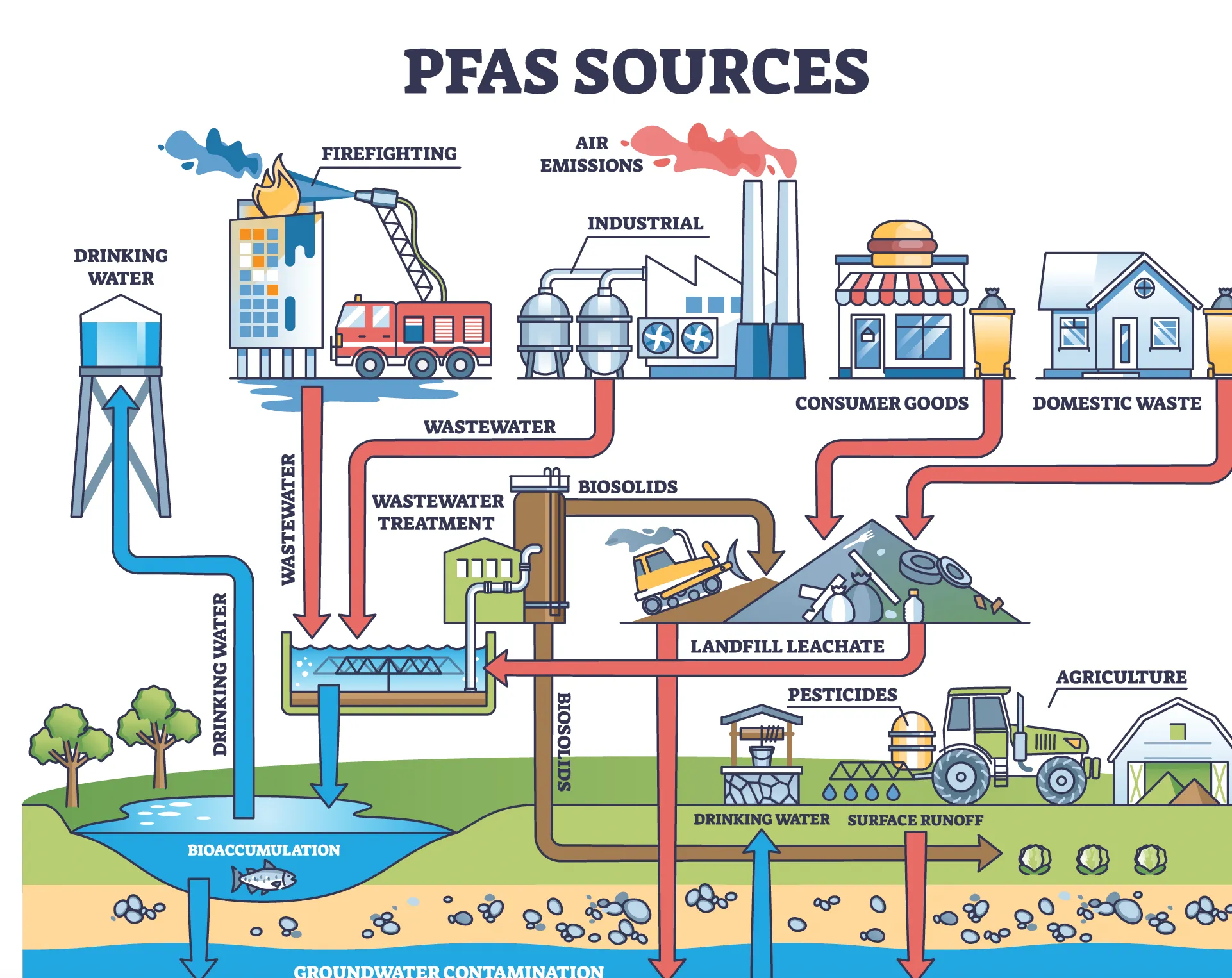DOD IG to Investigate Military’s Cleanup of PFAS

The DOD has completed a preliminary assessment of its PFAS clean-up efforts. PFAS are chemicals that stay in the bloodstream after ingestion, posing dangers to human health.
The DoD completed its Preliminary Assessments/Site Inspections (PA/SI) phase on Sept. 30, 2024, at 712 defense installations to monitor their cleanup of per- and polyfluoroalkyl substances (PFAS), according to a military report about the cleanup efforts. The PA/SI phase is the first in a series of inspections to ensure the installations maintain a hazard-free environment.
PFAS are long-lasting chemicals that break down extremely slowly, according to the FDA. They were first used in the 1940s to help preserve food and are now widely used in hundreds of products sold in the United States and worldwide.
Where are PFAS Found?
The usual substances that you can find PFAS are in paints, cleaning products, water-resistant fabrics and carpet materials, as well as food packaging, food processing equipment and cookware items, according to the FDA. Although PFAS can be chemically different, they all share a common bond in carbon-fluorine, which is very slow to degrade because of its resilient nature.
The EPA and FDA warn that the widespread use of PFAS over the years has increased the environmental contamination of soil, air, and water. Blood tests in humans and animals have shown certain types of PFAS within the bloodstream.

Linked to Serious Health Issues
Scientists are still studying the long-term effects of PFAS, but serious health issues have been linked to certain types, according to the FDA. Since 2019, the FDA has tested 1,300 samples of food, including 400 samples of food developed and processed in areas known to be more contaminated.
In February 2024, the FDA announced that grease-proofing agents that used PFAS would no longer be sold in the U.S., according to the FDA. They vowed to continue testing for consumer exposure to PFAS in 2024 and 2025.
The DoD determined that 722 National Guard facilities, military installations, Formerly Used Defense Sites and Base Realignment and Closure locations require an assessment for PFAS use or, at least, the potential for the substances to be released, according to the PFAS site. DoD completed the evaluation of 712 installations on Sept. 30, 2024.
The DoD determined that 131 of the installations assessed were eligible to be exempt from further testing, while 581 installations were to proceed to the next step of the testing phase, according to the assessment report issued by the DoD.
Cleanup Actions
The following steps for each installation and the cleanup actions they will need to take will be based on risk, according to the PFAS site. Some installations may be required to remove soil “hot spots,” while others may need to install groundwater extraction systems. During this process, the DoD will work with communities and regulatory agencies to share information and ensure transparency.
The DoD will also address PFAS in the groundwater of the affected areas, performing removal actions where there is a risk to human health, according to the PFAS site. The DoD vowed to mitigate the impacts of PFAS in groundwater and surrounding areas In a Feb. 6, 2024 report.
Discover More Muck
Why George Floyd Got Justice But Jonathan Rodgers Got Forgotten
Report John Lynn | Aug 27, 2025

Card Cracker Turned Carjacker Sentenced to Six Years
Report Strahinja Nikolić | Feb 28, 2025

Weekly Muck
Join the mission and subscribe to our newsletter. In exchange, we promise to fight for justice.
Weekly
Muck
Join the mission and subscribe to our newsletter. In exchange, we promise to fight for justice.





